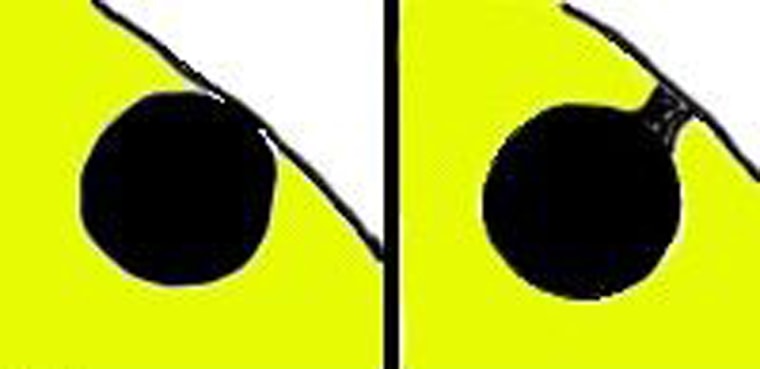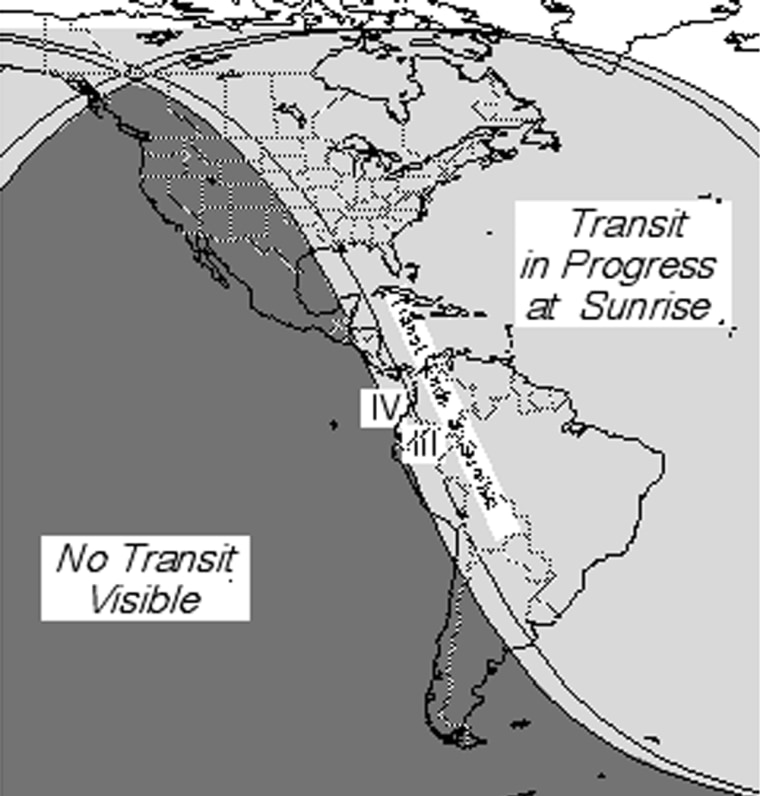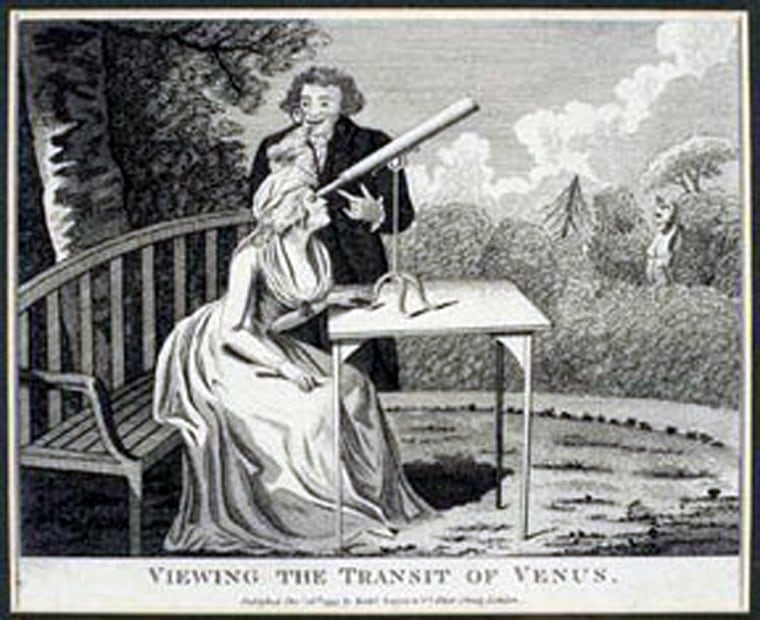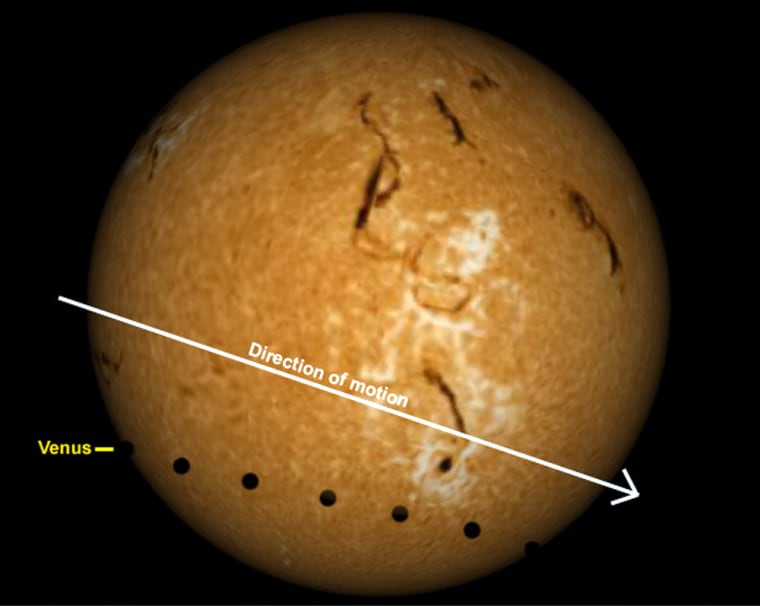On June 8, Venus will cross in front of the sun for the first time since 1882, and backyard skywatchers can see the spectacle.
The best view will be from Europe, but parts of America and most of Asia and Africa can witness the historic passage, weather permitting.
Get an of the Venus transit, then use the following viewer's guide to get the most out of this rare astronomical event:
What will happen
Earth, Venus and the sun will all be in a direct line in space. Venus will make contact with the outer portion of the sun early in the morning in Europe (and before dawn U.S. time). It will appear as a small black spot about one-32nd the diameter of the sun.
Safe must be employed.

One of the curious aspects, called the "black drop," will occur just as Venus gets fully in front of the Sun's disk at ingress, and again just before it egresses about six hours later from the other side. Venus' black disk will appear to remain linked to the edge of the Sun for a moment, stretching into an apparent pear shape.
There are two causes for the black drop: The Sun is less bright at its visible edge, and there is a natural blurring effect in telescopes.
Where and when it's visible
The transit will be visible in all of Europe and most of Asia and Africa. It begins shortly after 0500 Universal Time (1 a.m. EDT) and ends in midday for European locations. Times for world cities are available from NASA . (See for notes on reading the NASA timetable.)

In the United States, the final moments of the event will be visible only in Eastern parts of the country just after sunrise, providing viewer's have an unobstructed view of the horizon. In Boston, New York and Philadelphia, for example, the Sun will be more than 15 degrees above the horizon at around 7:05 a.m. ET when Venus begins its 20-minute exit from the Sun's disk. (Your fist on an outstretched arm covers about 10 degrees of sky.)
Times for U.S. cities are available from NASA .
The event is discussed in Universal Time and must be adjusted for local timekeeping. (Example: 11:05 UTC minus 4 hours equals 7:05 EDT). The times are listed in hours:minutes:seconds format (example: 11:05:54). The table shows two ingress times (when Venus touches the sun's limb and then is fully in front of the sun) and two egress times (when it begins and finishes leaving the disk). "Alt" stands for altitude, in degrees above the horizon (10 degrees is about the width of your fist on an outstretched arm).
Never look directly at the sun with your naked eye or through a telescope or binoculars. Severe eye damage can result.
With proper viewing filters, the transit will be visible without telescopes or binoculars. Viewers should use special, approved filters that can be purchased from reputable dealers of astronomy products.
The sun's image and the shadow of Venus can also be projected through binoculars or a telescope onto a white screen, sheet of paper or wall.
Webcasts
For many observers, the best view will come over the Internet. Several observatories plan live video streams or the posting of photos as the six-hour event unfolds. Some observatories may be clouded out, so here are more than a dozen to pick from:
- Exploratorium Museum (via an observatory in Athens, Greece)
- NASA has partnered with 12 observatories worldwide
- European Southern Observatory will post images from various large telescopes
- National Solar Observatory's GONG program (Australia, India, and the Canary Islands)
Other expected webcasts, some using smaller telescopes and some planned by amateur astronomers:
The University of Central Lancashire has a list of other worldwide events associated with the transit.
Education opportunities
The Venus transit is a great way to introduce young people to astronomy. It can be used as a launch point to teach about Venus, the Sun, and orbital mechanics.
Some institutions have put together teacher's guides for the event:
History of transits
Venus regularly passes between Earth and the sun, but usually it is slightly above or below our line of site. Not for 122 years has Venus transited the sun. And because the first Venusian transit was only predicted in the 1600s, by Johannes Kepler, only five have been recorded, in 1639, 1761, 1769 and 1874 and 1882.

Early astronomers hoped the transits would allow them to pin down distances from Earth to Venus and to the sun, but efforts proved disappointing. This year's event will be watched mostly for the sake of curiosity.
Some astronomers are interested in the transit as a way to hone skills for using the related celestial alignments for detecting planets passing in front of other stars and probing the atmospheres of those planets.
There is some strange mathematical sense to the years between Venusian transits. The circumstances repeat in this manner: 8 years, 121½ years, 8 years, 105½ years.
The next transit is on June 6, 2012, and will be visible from northwestern North America, northern Asia, Japan, Korea, eastern China, Philippines, eastern Australia and New Zealand, according to NASA. Portions of the 2012 event will be visible in parts of North America, Asia, the Middle East, Europe and Africa.
Find Venus tonight
Venus is easy to spot in the western evening sky. It outshines all other stars and planets. It is visible even in daylight if you know exactly where to look.
As the sun sets, Venus becomes apparent high in the west, and by the time darkness sets in, the planet blazes with reflected sunlight as it sinks toward the horizon.
Venus is rapidly approaching the sun from our line of sight, however (that's why the transit will occur on June 8). So it is lower in the sky each evening. It sets by 10:30 p.m. on May 18 and before 10 p.m. on May 31.
With a small telescope, you can see that Venus is crescent shape. Sunlight hits the planet at an angle, and like the moon it goes through phases. The crescent becomes thinner each evening.
